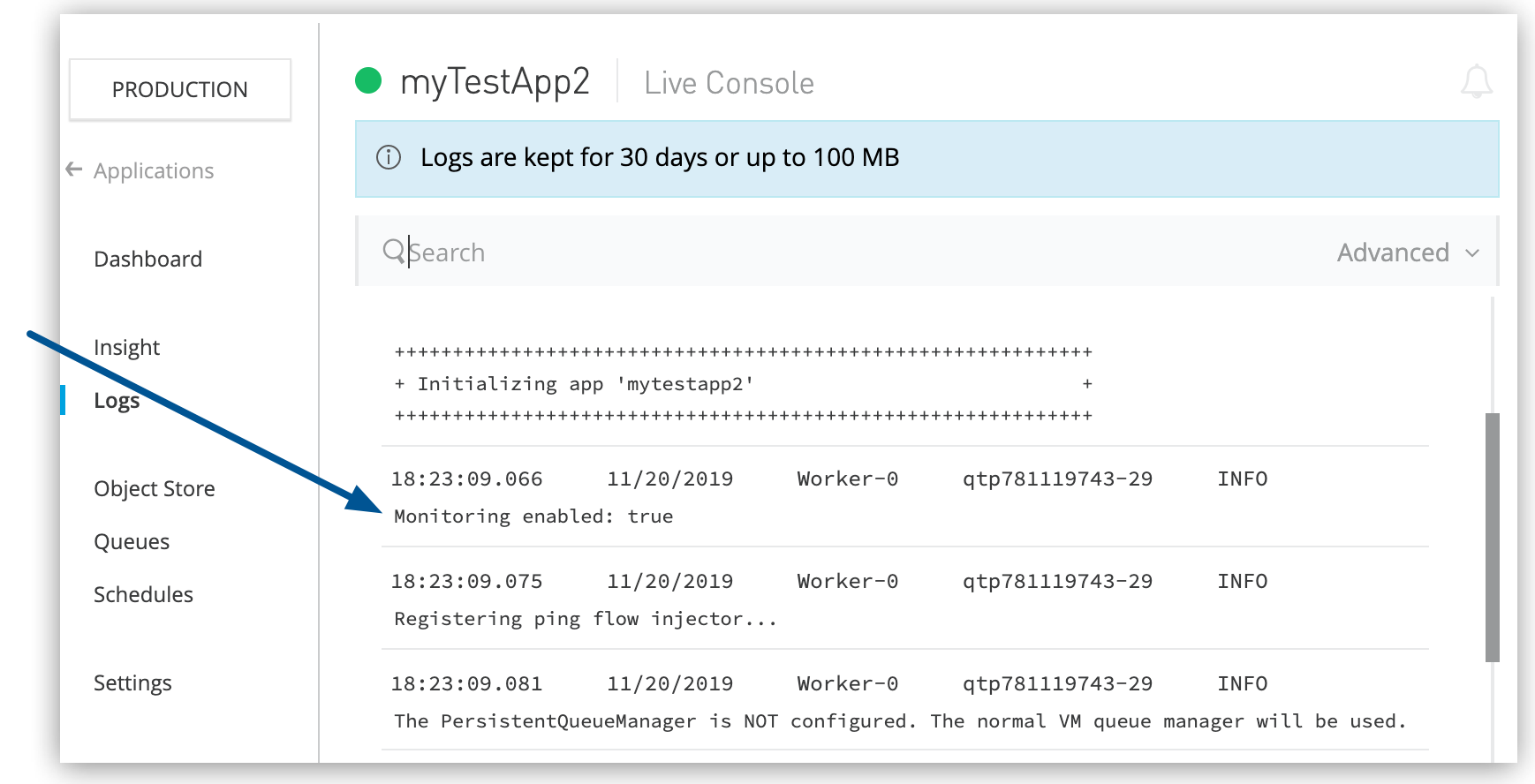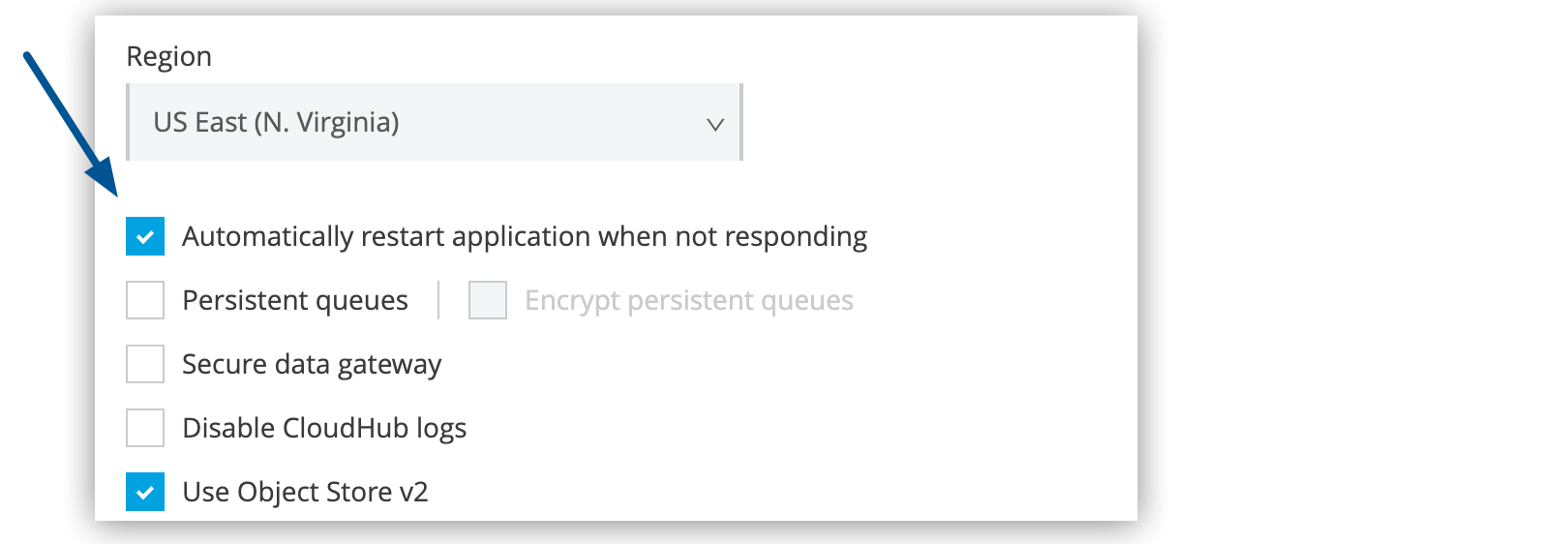
Application Monitoring and Automatic Restarts
CloudHub monitors all applications and enables you to receive notifications and diagnostic information if your application becomes unresponsive.
You can enable automatic restarts so that your application can recover automatically without your intervention.
How Application Monitoring Works
Monitoring works differently depending on your Mule version.
-
Mule 4.x
CloudHub uses the Mule Agent health check endpoint to determine the readiness of a deployment. This monitoring method provides a thorough check to ensure that the application is deployed and applies gateway policies.
Every 30 seconds, CloudHub checks the health check endpoint. If CloudHub detects that the health check endpoint fails three times in a row, the logs print a warning.
-
Mule 3.8.x
When you deploy, CloudHub inserts a monitoring ping flow into your application.
When the application starts, the logs display a message to indicate that monitoring is enabled and that the ping flow has been injected into your application:
 Figure 1. The arrow shows the
Figure 1. The arrow shows theMonitoring enabledandRegistering ping flow injectormessages in the logs.Every 30 seconds, CloudHub sends an HTTP GET request to the ping flow.
If the application is running normally, the ping flow sends a response. If CloudHub receives no response from three consecutive pings, the logs display a warning and a full thread dump.
In both cases, CloudHub triggers a notification to the console to alert you that a worker for an application stopped responding.
If you configure email alerts, the unresponsive worker also triggers an email alert based on the Worker Not Responding event.
Enable Automatic Restarts
You can enable automatic restarts when you deploy a new application or redeploy an existing application.
-
Deploy a new app
-
In Runtime Manager, click Applications in the menu on the left.
-
Click Deploy Application and select CloudHub from Deployment Target.
-
Select the Automatically restart application when not responding option:
 Figure 2. The arrow shows the Automatically restart application when not responding option.
Figure 2. The arrow shows the Automatically restart application when not responding option. -
Click Deploy Application.
-
-
Redeploy an existing app
-
In Runtime Manager, click Applications in the menu on the left.
-
Click the app status to display the details pane on the right
-
Click the Manage Application button to display the Settings page for the app.
-
Select the Automatically restart application when not responding option:
 Figure 3. The arrow shows the Automatically restart application when not responding option.
Figure 3. The arrow shows the Automatically restart application when not responding option. -
Click Apply Changes.
-
If you change the flag monitoringEnabled via API, the application doesn’t restart automatically and you must restart it manually.
|
How Automatic Restarts Work
If you select the Automatically restart application when not responding option, CloudHub monitors the worker and also automatically restarts the application if necessary.
CloudHub displays a notification that the app is restarting and another to report the success or failure of the restart.
-
If the restart succeeds, the ping script is reinitialized so that monitoring continues.
-
If the restart fails, CloudHub continues to attempt restarting the app up to a total of five times.
After the maximum number of restart attempts is exceeded, CloudHub takes no further action. The monitoring script exits and the application is left unchanged until you manually intervene.
The logs report the details of the restart procedure.
If you don’t select the Automatically restart application when not responding option, the monitoring script exits and the application is left unchanged until you manually restart.
CloudHub displays a notification and a log message and takes no further action.



